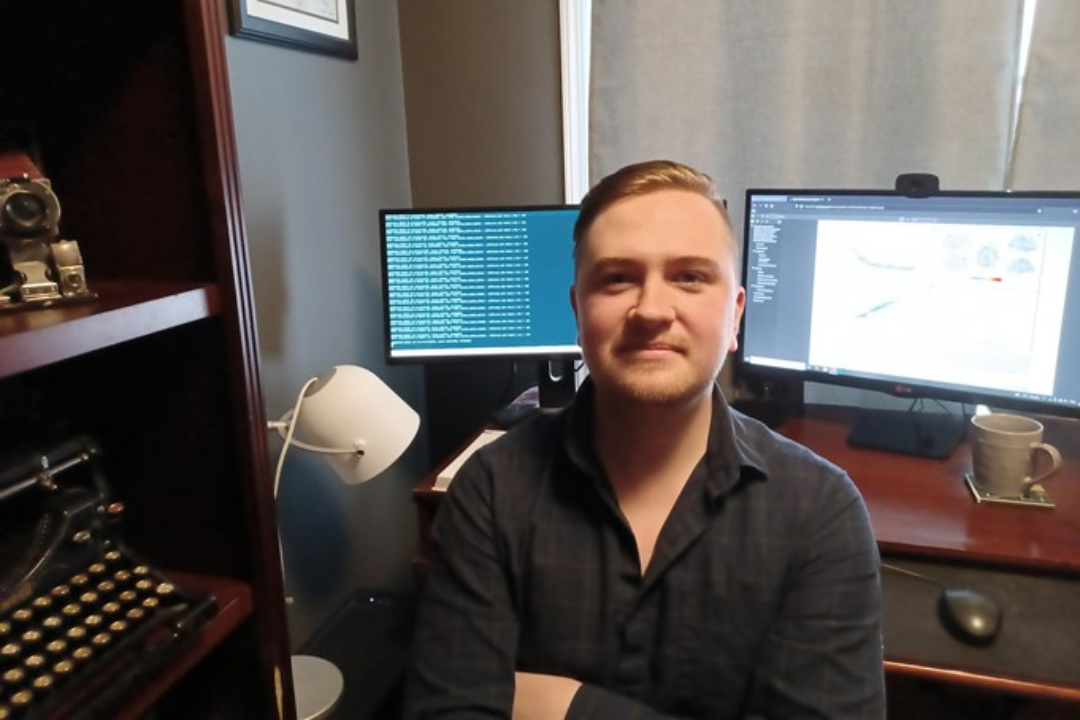
Computer mapping of brain connections may reduce the number of required MRI scans: USask research
University of Saskatchewan (USask) PhD candidate Josh Neudorf and his research team is using innovative computer technology to map brain function.
By Brooke KleiboerThe research team hopes the computer model of brain connectivity may be able to save the health care system and research centres time and money by decreasing the number of necessary patient brain scans.
“The brain represents one of the most complex physical systems in the known universe, and as researchers we are able to investigate the brain using our own brains and the advanced computational resources available to us,” said Neudorf, who is pursuing his doctoral degree in the USask College of Arts and Science Department of Psychology and Health Studies.
The brain uses axons (nerve fibres) to allow neurons—nerve cells—to 'talk’ to the rest of the brain and the body. Neudorf said thinking of the brain as a computer is a great way to understand how it communicates.
“If you think of the brain as a computer with wires connecting the various components, our research investigates to what extent the ‘wires’ connecting different brain regions—called ‘structural connectivity’—determine how well those regions work together,” said Neudorf.
Neudorf said the challenge with analyzing brain connections and how they make the brain function is that not all regions are directly connected. Sometimes, brain regions are connected only through a common area.
Typically, brains are assessed using magnetic resonance imaging (MRI) techniques. MRI machines use large magnets and radio waves to create a detailed image of brain and spinal cord activity.
For the first time in brain research, Neudorf and his team used a graph neural network deep learning computer model—one that is built to learn and make decisions from data—to map brain connectivity. The work is supervised by Dr. Ron Borowsky (PhD), USask College of Arts and Science professor and director of the Cognitive Neuroscience Lab.
“The specific type of deep learning we used has never before been applied to this problem, and proved to be tremendously successful,” said Neudorf.
Approximately 1,000 MRI brain scans from the publicly available Human Connectome Project were used as data to draw conclusions into the relationship between the structure and function of the brain.
The findings concluded indirect connections between brain regions may have more of an influence on the overall function of the brain than previously thought. It was also noted that brain regions with lots of direct connections can elicit more complex brain functions. These results were published in the journal Neuroscience.
“Previously, the structural connections in the brain have not been able to show a strong association with the patterns of functional connectivity. Our research demonstrates a stronger association than the many other international attempts over the past decades.”
The work has been published in the journal Brain Structure and Function in 2021. Another USask study co-led by Neudorf focused on how knowledge of connectivity in brain areas responsible for language may adapt due to epilepsy. This work was published in the journal Epilepsy and Behavior in 2020. Neudorf has been a part of 15 academic publications during his time at USask’s Cognitive Neuroscience lab.
“With future improvements and applications of this method, functional connectivity scans (which take from 10 minutes up to one hour in an MRI machine) may no longer be necessary, because the functional connectivity [of the brain] could be directly calculated based on the structural connectivity.”
Another possible application of the work is determining brain functionality in patients who are unresponsive based solely on the brain’s underlying structure.
Neudorf said the team would like to expand on the work by more explicitly defining what specific structural connectivity patterns support greater brain function.
“As I learn more about the brain, I realize there are so many more fascinating questions waiting to be answered.”
The research has been funded by the Natural Sciences and Engineering Research Council of Canada (NSERC) Discovery grant program and the NSERC Canada Graduate Scholarships doctoral and master’s programs.
This article first ran as part of the 2022 Young Innovators series, an initiative of the USask Research Profile and Impact office in partnership with the Saskatoon StarPhoenix.
Article re-posted on .
View original article.

